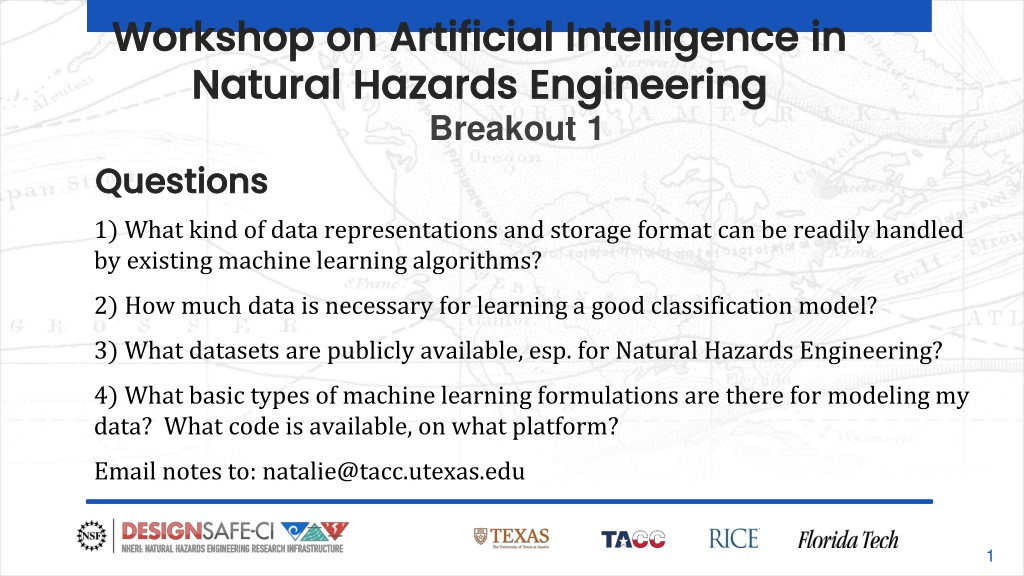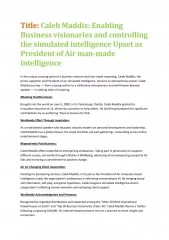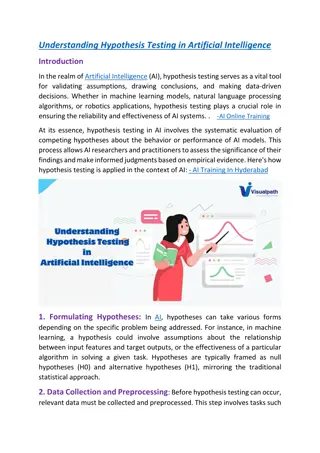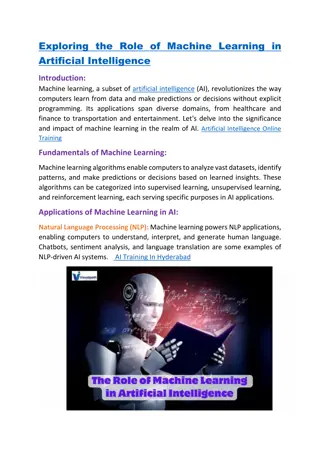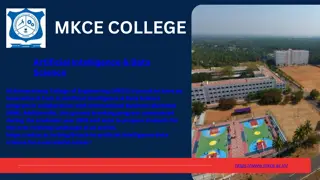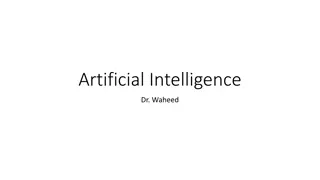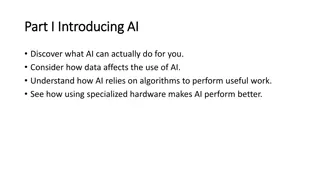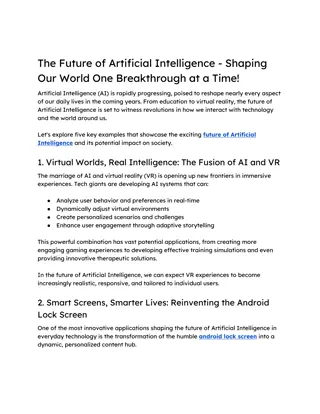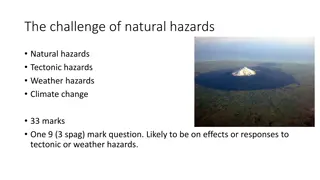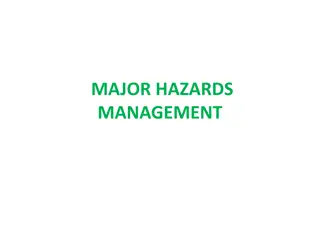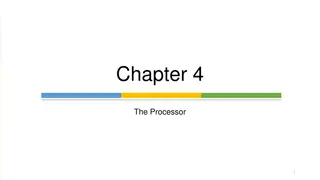Workshop on Artificial Intelligence in Natural Hazards Engineering
This workshop focuses on exploring the integration of artificial intelligence and machine learning with natural hazards engineering, discussing data representations, classification models, combining ML with hazards simulations, and addressing classification problems in the field. Participants engage in activities to identify knowledge gaps, barriers, and opportunities for advancements in research. The workshop aims to enhance the application of AI/ML in natural hazards engineering for better simulation capabilities.
Download Presentation

Please find below an Image/Link to download the presentation.
The content on the website is provided AS IS for your information and personal use only. It may not be sold, licensed, or shared on other websites without obtaining consent from the author. Download presentation by click this link. If you encounter any issues during the download, it is possible that the publisher has removed the file from their server.
E N D
Presentation Transcript
Workshop on Artificial Intelligence in Workshop on Artificial Intelligence in Natural Hazards Engineering Natural Hazards Engineering Breakout 1 Questions Questions 1) What kind of data representations and storage format can be readily handled by existing machine learning algorithms? 2) How much data is necessary for learning a good classification model? 3) What datasets are publicly available, esp. for Natural Hazards Engineering? 4) What basic types of machine learning formulations are there for modeling my data? What code is available, on what platform? Email notes to: natalie@tacc.utexas.edu 1
Workshop on Artificial Intelligence in Workshop on Artificial Intelligence in Natural Hazards Engineering Natural Hazards Engineering Breakout 2 Questions Questions 1. What could be the most effective ways to combine ML with natural hazards simulations (e.g. DNN with OpenSEES)? What would be the purpose or added benefit of doing this? What do you see as the pitfalls? 2. If you are already using ML in physics-based simulation frameworks, what has been your experience so far? 3. How can Designsafe help the natural hazards community get the best use of ML to enhance simulation capabilities? Email notes to: natalie@tacc.utexas.edu 2
Workshop on Artificial Intelligence in Workshop on Artificial Intelligence in Natural Hazards Engineering Natural Hazards Engineering Day 1: Pass the Cards Activity Question 1: What is a pressing Question 1: What is a pressing knowledge gap in your field that knowledge gap in your field that could benefit from introduction of could benefit from introduction of AI/ML? AI/ML? Score: 1 3 (best) 3
Workshop on Artificial Intelligence in Workshop on Artificial Intelligence in Natural Hazards Engineering Natural Hazards Engineering Day 1: Pass the Cards Activity Question 2: What is a primary Question 2: What is a primary barrier we need to overcome to barrier we need to overcome to advance research at the advance research at the intersection of hazards intersection of hazards engineering and AI/ML/DL? engineering and AI/ML/DL? Score: 1 3 (best) 4
Workshop on Artificial Intelligence in Workshop on Artificial Intelligence in Natural Hazards Engineering Natural Hazards Engineering Breakout 3 Questions Questions 1. What are some typical but challenging classification problems in Natural Hazards Engineering, and what types of models may be most promising to address them? 2. What CI resources are needed to accomplish this synthesis? 3. Are there other education, infrastructure, or programs needed to advance fruitful work at the intersection of Natural Hazards Engineering and AI/ML/DL? Email Notes to: natalie@tacc.utexas.edu 5
